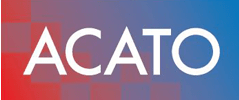ISO 27001 Compliance: A Practical Guide for SMEs

ISO 27001 compliance is often seen as a challenge for small and medium-sized enterprises (SMEs), yet it can be a game-changer for security and trust. This guide will break down the essentials of ISO 27001, highlighting key components and steps to achieve compliance. By understanding the advantages and overcoming common obstacles, SMEs can protect their data and strengthen their credibility. This content will help address concerns about data security, showing how effective compliance can lead to enhanced client relationships and increased business opportunities.
Key Benefits of ISO 27001 Compliance for SMEs
- ISO 27001 compliance enhances the security posture of small and medium-sized enterprises (SMEs)
- Implementing strong information security management systems builds trust with clients and stakeholders
- Regular risk assessments and employee training are vital for effective compliance with ISO 27001
- Continuous improvement of security controls strengthens defenses against evolving cyber threats
- Accurate documentation and preparation ensure readiness for audits and maintain certification standards
Understanding ISO 27001 and Its Relevance to SMEs

ISO 27001 establishes a framework for an organization‘s information security management system (ISMS), focusing on maintaining the confidentiality, integrity, and availability of information. For small and medium-sized enterprises (SMEs), complying with this standard enables them to enhance their security posture and manage information assets effectively. This compliance not only protects sensitive data but also builds trust with clients and stakeholders.
The relevance of ISO 27001 to SMEs lies in its emphasis on risk management and the proactive identification of vulnerabilities. Conducting a thorough gap analysis helps organizations identify areas of improvement within their current security practices, allowing them to mitigate risks associated with potential data breaches. Implementing standardization processes increases efficiency and ensures consistent protection of information assets.
Furthermore, achieving ISO 27001 certification provides a competitive edge in the marketplace, especially as clients increasingly demand assurance regarding data security. Compliance demonstrates an organization‘s commitment to safeguarding confidential information, which is vital for maintaining customer relationships and fulfilling legal obligations. This commitment significantly contributes to the overall credibility and reputation of SMEs.
- Establishes a framework for managing information security.
- Enhances security posture through compliance.
- Focuses on risk management and vulnerability identification.
- Conducts gap analysis to improve security practices.
- Provides a competitive edge in the marketplace.
- Builds credibility and trust with clients and stakeholders.
ISO 27001 offers a solid foundation for security in small and medium-sized enterprises. Now, let’s explore the key components that will guide you toward full compliance.
Key Components of ISO 27001 Compliance

For SMEs aiming for ISO 27001 compliance, understanding key components is essential. This includes establishing an Information Security Management System (ISMS) to safeguard data, conducting thorough risk assessment and management processes, and implementing applicable security controls. Documentation and record-keeping requirements further support compliance tasks, ensuring organizations meet necessary regulations and maintain robust management systems. Insight into encryption practices will also be covered to enhance data protection strategies.
Information Security Management System Overview
The Information Security Management System (ISMS) serves as the backbone of ISO 27001 compliance, focusing on the systematic management of sensitive company information. By identifying potential vulnerabilities, SMEs can enhance the integrity of their data and establish strong frameworks to counteract cyberattacks. Regular audits within the ISMS framework help ensure ongoing regulatory compliance, allowing organizations to adapt their security measures to meet evolving legal requirements and emerging threats.
Risk Assessment and Management Processes
For small businesses, implementing effective risk assessment and management processes is crucial to achieving the ISO 27001 Certification. This involves identifying potential vulnerabilities and threats to their cybersecurity framework, allowing for the prioritization of resources to mitigate risks. By engaging in comprehensive assessments, organizations enhance their credibility and demonstrate to customers that they take data protection seriously, ultimately leading to greater trust and loyalty.
- Identifying potential vulnerabilities in the cybersecurity framework.
- Prioritizing resources to mitigate assessed risks.
- Enhancing credibility and trust with customers.
Security Controls Applicable to SMEs
Security controls are essential for SMEs seeking ISO 27001 certification, as they serve to mitigate the risks of data breaches and enhance overall information security. These controls may include measures such as access controls, encryption practices, and incident response plans. By implementing these standardized security measures, businesses not only protect sensitive data but also gain a competitive advantage that is increasingly demanded by clients and stakeholders in today’s marketplace.
- Implementing access controls to limit unauthorized entry.
- Utilizing encryption to protect sensitive data.
- Developing incident response plans for efficient handling of breaches.
Documentation and Record-Keeping Requirements
Documentation and record-keeping are critical elements for achieving ISO 27001 compliance, as they enable organizations to systematically track information security management practices. By maintaining comprehensive records, SMEs can effectively assess risks and demonstrate their commitment to security, which builds confidence among clients and partners throughout the supply chain. Engaging in thorough documentation allows businesses not only to safeguard sensitive data but also to streamline their processes, ensuring they are prepared for audits and enhancing their overall information governance strategy.
Understanding the key components of ISO 27001 is just the beginning. Now, it’s time to explore the practical steps to achieve compliance and secure your organization’s future.
Steps to Achieve ISO 27001 Compliance

Initial gap analysis and preparation set the foundation for ISO 27001 compliance, helping organizations assess current security measures and identify necessary improvements. Developing a comprehensive information securitypolicy, implementing required security controls, and conducting employee training and awareness initiatives are crucial for accountability. Lastly, establishing internal audit procedures will ensure compliance monitoring and enhance the organization’s reputation while managing expenses effectively.
Initial Gap Analysis and Preparation
Conducting an initial gap analysis is a vital step for SMEs aiming to achieve ISO 27001 compliance. This process involves assessing current information security management practices against the established standards, which helps identify areas needing improvement, especially in relation to managing personal data and developing comprehensive security policies. By considering factors such as cloud computing usage and fostering a culture of security awareness, organizations can lay a strong foundation for their Information Security Management System (ISMS), thus ensuring they are better equipped to protect sensitive information and reduce vulnerabilities:
- Assess current information security practices.
- Identify improvements related to personal data management.
- Develop a comprehensive security policy.
- Incorporate cloud computing security measures.
- Foster a culture of security awareness among employees.
- Establish a strong foundation for the ISMS.
Developing a Comprehensive Information Security Policy
Developing a comprehensive information security policy is essential for SMEs seeking ISO 27001 certification. This policy should clearly define the management of information assets, establish stakeholder responsibilities, and incorporate automated processes for monitoring compliance. Regular internal audits can validate the effectiveness of these policies, ensuring that SMEs not only manage their property securely but also meet the expectations of iso 27001 certificationcompanies, fostering trust with clients and partners.
| Step | Description |
|---|---|
| Assess Current Practices | Evaluate existing information security measures against ISO 27001 requirements. |
| Define Stakeholder Roles | Clarify responsibilities for security management across the organization. |
| Implement Automated Processes | Automate compliance monitoring to reduce manual errors and enhance efficiency. |
| Conduct Internal Audits | Regularly review and assess the effectiveness of the information security policy. |
Implementing Required Security Controls
Implementing required security controls is a critical step for organisations aiming to protect their sensitive data and maintain the integrity of their IT systems. Security controls refer to the safeguards or countermeasures employed to mitigate risks and defend against threats, which can range from cyber-attacks to physical breaches. The process begins with a thorough risk assessment, identifying potential vulnerabilities within the organisation’s architecture. By understanding the specific threats and weaknesses, organisations can prioritise which controls should be implemented to best protect their assets. This may include measures such as firewalls, intrusion detection systems, encryption, and access controls, each tailored to address different aspects of security.
Once the necessary controls have been identified, the next phase is to establish a robust implementation plan. This plan should not only outline the technical deployment of security measures but also incorporate training and awareness programmes for employees. Human error remains one of the leading causes of security incidents, making it essential for staff to understand their role in safeguarding organisational data. Additionally, organisations must ensure ongoing monitoring and evaluation of these security controls to adapt to evolving threats. Regular audits and assessments will help in assessing the effectiveness of the controls and identifying any areas for improvement. By methodically implementing required security controls, organisations can significantly bolster their defence against potential attacks and ensure a secure operational environment.
Implementing required security controls is a fundamental aspect of achieving ISO 27001 compliance, as it ensures that an organization meets its information security objectives while adhering to the international standard. This involves establishing ownership of security measures and utilizing automation tools that enhance efficiency in managing risk assessments and security protocols. By actively engaging employees in the implementation process and providing clear guidelines, SMEs can foster a culture of security awareness, leading to stronger protection of sensitive information and improved compliance outcomes.
- Establish ownership of security measures.
- Utilize automation tools for efficiency.
- Conduct thorough risk assessments.
- Engage employees in the implementation process.
- Foster a culture of security awareness.
Employee Training and Awareness Initiatives
Employee training and awareness initiatives play a critical role in achieving ISO 27001 compliance for small and medium-sized enterprises (SMEs). By providing regular training sessions on information security management practices, organizations can equip staff with the knowledge necessary to recognize potential threats, adhere to security compliance protocols, and respond effectively to incidents. This training helps cultivate a culture of security awareness, ensuring that all employees understand their responsibilities regarding data protection and the importance of proper incident management, particularly in the context of European Union regulations:
| Initiative | Description |
|---|---|
| Regular Training Sessions | Conduct ongoing training to keep staff updated on information security practices. |
| Assessing Knowledge | Utilize assessments to gauge employee understanding of security compliance standards. |
| Incident Response Drills | Implement drills to practice effective responses to potential security incidents. |
| Feedback Mechanisms | Encourage employee feedback to continuously improve training effectiveness. |
Internal Audit Procedures for Compliance Monitoring
Internal audit procedures are essential for organizations pursuing ISO 27001 compliance, as they ensure effective monitoring and evaluation of information security practices. By routinely assessing access control measures and examining how intellectual property is protected, SMEs can identify weaknesses and areas for improvement within their security frameworks. Conducting thorough audits not only supports compliance with standards such as TISAX but also reinforces the organization’s commitment to safeguarding sensitive information, ultimately enhancing trust among clients and stakeholders.
Even with clear steps laid out, the path to ISO 27001 compliance can be rocky. Small and medium-sized enterprises face unique hurdles that can complicate the journey, demanding attention and strategy.
Challenges SMEs Face in Achieving ISO 27001 Compliance

Small and medium-sized enterprises (SMEs) encounter several challenges when striving for ISO 27001 compliance. Limited resources and budget constraints frequently hinder data security efforts, while employee resistance to change can impede the implementation of necessary policies. Additionally, the complexity of documentation and processes may overwhelm teams, and keeping up with evolving threats adds another layer of difficulty. Addressing these issues is vital for organizations aiming to enhance their information security management and achieve compliance.
Limited Resources and Budget Constraints
Many small and medium-sized enterprises (SMEs) face significant hurdles when pursuing ISO 27001 compliance due to limited resources and budget constraints. With financial limitations, it becomes challenging for these organizations to allocate sufficient funds toward necessary security measures, technology, and staffing, which may hinder their ability to implement effective information security management systems. To navigate these obstacles, SMEs can consider leveraging government grants or seeking partnerships with cybersecurity firms that offer cost-effective solutions tailored to their needs:
- Understand the importance of financial planning for compliance initiatives.
- Explore government grants designed to support cybersecurity improvements.
- Seek partnerships with firms offering affordable security solutions.
- Prioritize critical areas for investment to maximize available resources.
Employee Resistance to Change
Employee resistance to change poses a significant challenge for small and medium-sized enterprises (SMEs) aiming for ISO 27001 compliance. Many staff members may feel apprehensive about new security protocols and processes, particularly if they perceive these changes as disrupting their routine. To overcome this resistance, SMEs can emphasize the benefits of compliance, such as enhanced data security and a stronger corporate reputation, while providing comprehensive training sessions that foster understanding and support positive engagement with the new policies.
Complexity of Documentation and Processes
The complexity of documentation and processes involved in achieving ISO 27001 compliance can present significant challenges for small and medium-sized enterprises (SMEs). Many SMEs struggle to maintain the detailed records necessary for demonstrating compliance, which can include risk assessments, security policies, and audit trails. Simplifying these documentation requirements with streamlined templates and checklists can help organizations not only meet regulatory expectations but also enhance their overall information governance strategies:
- Challenge in maintaining detailed compliance records.
- Importance of risk assessments and security policies.
- Benefits of templates and checklists for documentation.
Keeping Up With Evolving Threats
Keeping up with evolving threats poses a substantial challenge for small and medium-sized enterprises (SMEs) striving for an ISO 27001 Certificate. Cyber threats are increasingly sophisticated, making it essential for SMEs to continuously assess and update their security measures and protocols. Implementing regular training and awareness programs can help employees recognize these threats early, while proactive risk assessments ensure that organizations remain prepared for potential data breaches:
| Challenge | Action |
|---|---|
| Evolving Threats | Regularly assess and update security measures to combat sophisticated cyber threats. |
| Employee Awareness | Conduct ongoing training to keep staff informed about the latest security risks. |
| Proactive Risk Assessments | Engage in frequent risk evaluations to identify vulnerabilities and update security protocols. |
After navigating the tough landscape of compliance, many SMEs find a glimmer of hope. The path forward reveals not just challenges, but also significant benefits that come with ISO 27001 compliance.
Advantages of ISO 27001 Compliance for SMEs

ISO 27001 compliance offers significant advantages for small and medium-sized enterprises (SMEs) by enhancing customer trust and confidence while protecting sensitive information from breaches. It also improves operational efficiency and risk management practices, enabling SMEs to respond effectively to potential threats. Furthermore, compliance facilitates business partnerships and opens new opportunities, positioning SMEs competitively in the marketplace.
Enhancing Customer Trust and Confidence
ISO 27001 compliance significantly enhances customer trust and confidence for small and medium-sized enterprises (SMEs) by demonstrating a commitment to safeguarding sensitive information. When clients see that a business adheres to international standards for information security, they are more likely to trust the organization‘s processes and practices. This trust can lead to stronger relationships and increased customer loyalty, as clients feel assured that their data is managed securely and responsibly. ISO 27001 process
Protecting Sensitive Information From Breaches
ISO 27001 compliance equips small and medium-sized enterprises (SMEs) with robust protocols designed to protect sensitive information from breaches. By implementing a risk management strategy that identifies vulnerabilities, SMEs can significantly reduce the likelihood of data incidents. These measures not only safeguard valuable data assets but also bolster the organization‘s reputation, as clients gain confidence in knowing their information is well-protected:
- Implementation of risk management strategies.
- Identification and mitigation of vulnerabilities in systems.
- Enhanced client confidence and trust in data protection.
Improving Operational Efficiency and Risk Management
Achieving ISO 27001 compliance significantly enhances operational efficiency and risk management for small and medium-sized enterprises (SMEs). Implementing this standard leads to improved processes, ensuring that information security practices are streamlined and integrated across the organization. For instance, continuous risk assessments allow SMEs to identify and respond to potential threats promptly, ultimately protecting valuable information assets and fostering greater customerconfidence in their data handling procedures.
Facilitating Business Partnerships and Opportunities
ISO 27001 compliance opens doors for small and medium-sized enterprises (SMEs) by showcasing their commitment to robust information security practices. When SMEs align with this internationally recognized standard, they enhance their credibility, making them more appealing to potential business partners who prioritize data protection. Furthermore, reputable clients often seek out organizations with such certifications, fostering new partnerships and opportunities that can lead to increased revenue and growth in competitive markets.
Maintaining ISO 27001 Compliance Over Time

To successfully maintain ISO 27001 compliance over time, small and medium-sized enterprises (SMEs) should focus on several key areas. Conducting regular internal audits and management reviews ensures ongoing security effectiveness, while continuous improvement of security controls strengthens the organization‘s defenses. Staying updated with ISO 27001 revisions is essential for aligning practices with current standards. Finally, preparing for external audits and managing certification maintenance solidifies the commitment to information security and builds trust with your clients.
Regular Internal Audits and Management Reviews
Regular internal audits and management reviews are vital components for small and medium-sized enterprises (SMEs) seeking to maintain over time. These audits provide an opportunity to assess the effectiveness of the information security management system (ISMS) and identify any areas that require improvement. By documenting findings and addressing identified weaknesses promptly, organizations can ensure that their security measures adapt to evolving threats, demonstrating their ongoing commitment to securing sensitive information and building trust with clients and stakeholders.
Continuous Improvement of Security Controls
Continuous improvement of security controls is essential for SMEs to maintain ISO 27001 compliance effectively. Regular evaluations of existing security measures help identify any gaps or weaknesses that may arise due to evolving threats or changes in business operations. For instance, organizations should frequently adapt their access controls and incident response plans based on the latest security trends to protect sensitive information continually:
- Regular evaluations of security measures to identify gaps.
- Adaptation of access controls based on current security trends.
- Continuous updates to incident response plans to address new threats.
Staying Updated With ISO 27001 Revisions
Staying updated with ISO 27001 revisions is essential for small and medium-sized enterprises (SMEs) to maintain compliance and reinforce their information security management systems. Regularly reviewing the latest changes to the standard allows organizations to adapt their practices accordingly, ensuring alignment with current security protocols. By following updates, SMEs can enhance their risk management strategies and remain proactive in protecting sensitive information, ultimately fostering greater client trust and loyalty.
Preparing for External Audits and Certification Maintenance
Preparing for external audits and maintaining ISO 27001 certification requires SMEs to adopt a proactive approach in organizing and reviewing their information security practices. This includes maintaining accurate documentation of policies, procedures, and internal audit findings, as these records provide auditors with clear insights into compliance efforts. Regularly simulating audits can familiarize teams with the process, identify gaps in security measures, and ensure all staff are aware of their responsibilities in the audit context, ultimately enhancing an organization‘s readiness and demonstrating its commitment to information security.
- Maintain accurate documentation of security practices.
- Conduct regular internal audits to identify gaps.
- Simulate audits to prepare employees for the process.
- Ensure staff understand their roles in compliance efforts.
Conclusion
ISO 27001 compliance is vital for small and medium-sized enterprises (SMEs) seeking to enhance their information security and build trust with clients. By establishing a robust Information Security Management System (ISMS) and conducting thorough risk assessments, SMEs can effectively mitigate potential data breaches. Achieving compliance not only protects sensitive information but also provides a competitive advantage in the marketplace. Ultimately, embracing strengthens operational efficiency and fosters lasting relationships with stakeholders.
